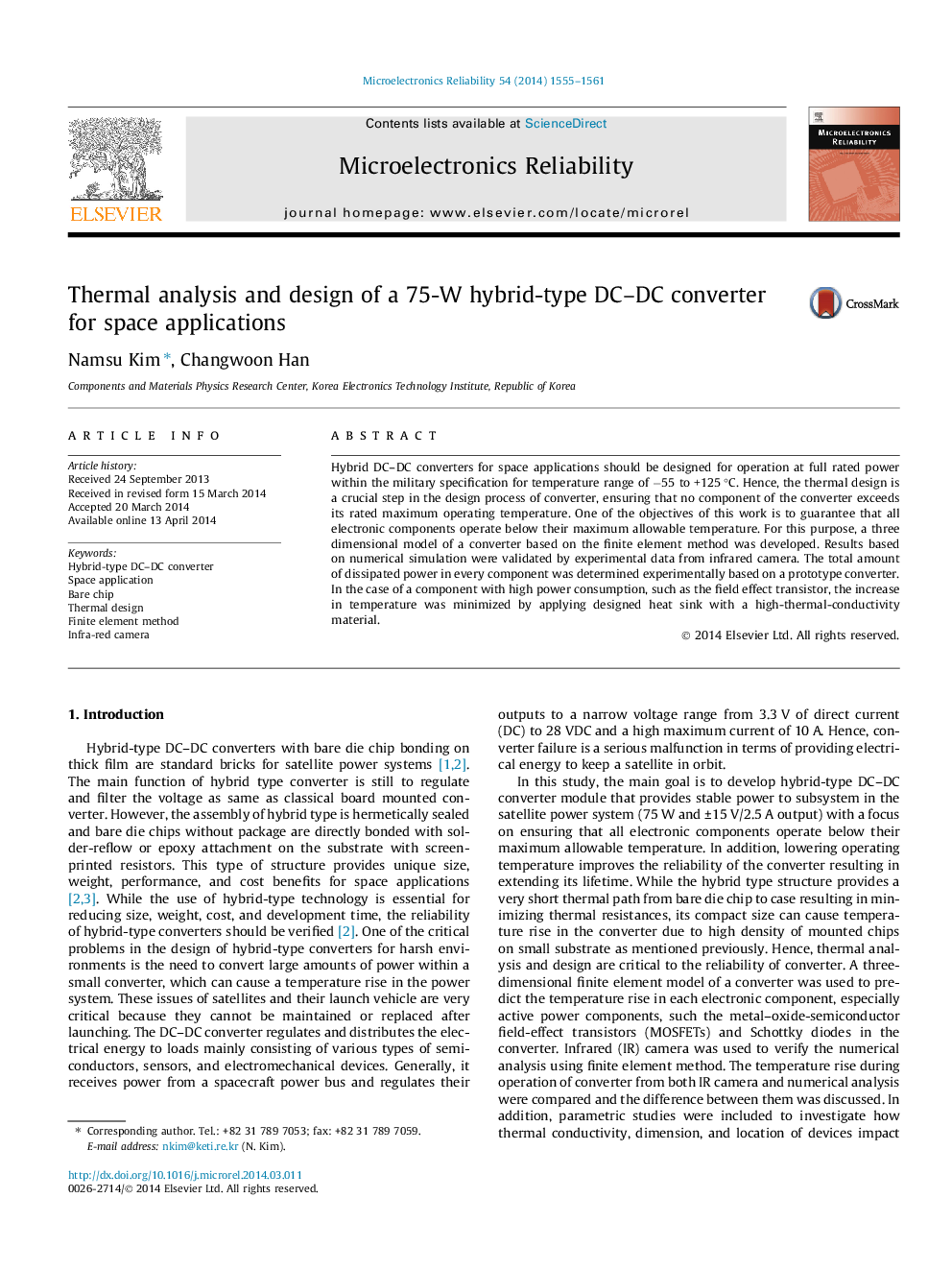| Article ID | Journal | Published Year | Pages | File Type |
|---|---|---|---|---|
| 544869 | Microelectronics Reliability | 2014 | 7 Pages |
•Thermal analysis for hybrid type converter was carried out.•Simulation results were validated by infra-red camera.•Parametric studies were carried out based on analysis results.•Based on parametric studies, design guide lines for thermal management were suggested.
Hybrid DC–DC converters for space applications should be designed for operation at full rated power within the military specification for temperature range of −55 to +125 °C. Hence, the thermal design is a crucial step in the design process of converter, ensuring that no component of the converter exceeds its rated maximum operating temperature. One of the objectives of this work is to guarantee that all electronic components operate below their maximum allowable temperature. For this purpose, a three dimensional model of a converter based on the finite element method was developed. Results based on numerical simulation were validated by experimental data from infrared camera. The total amount of dissipated power in every component was determined experimentally based on a prototype converter. In the case of a component with high power consumption, such as the field effect transistor, the increase in temperature was minimized by applying designed heat sink with a high-thermal-conductivity material.
